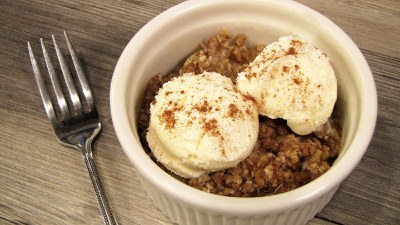Growing
When purchasing apple trees, buy them at local garden centers. Local garden centers understand which cultivars are best suited for your area. You also can purchase from mail-order nurseries, but make sure the cultivar is hardy to your growing zone.
Apple trees can take from two to five years to flower and produce fruit. Apples require a compatible donor tree as a pollinator to produce fruit. You can accomplish this by planting two different apple cultivars that bloom at the same time or with the presence of a blooming ornamental crab tree nearby.
Typically in the urban environment, you don’t need two different trees because plenty of compatible edible or ornamental apples trees are in neighboring yards.
If not properly pruned or thinned, apple trees may bear fruit every two years. Proper branch pruning or thinning the fruit within the first six weeks after bloom will remedy this.
Note: Avoid dangerous situations. Call your utility company before you dig to plant trees. This is required by law!
See the NDSU Extension publication “From the Garden or Orchard to the Table: Jams and Jellies from North Dakota Fruits” for more information.
Storage
Apples ripen six to 10 times faster when stored at room temperature. To extend their shelf life, store apples in a cool, dark place. If you store them in the refrigerator, they will stay crisp and juicy longer.
Preservation
Freezing: For best quality, prevent the apple flesh from browning with commercial ascorbic acid mixtures made according to directions. You also can use lemon or other fruit juice.
Dissolve ½ teaspoon ascorbic acid in 3 tablespoons water. Sprinkle over the fruit. Place slices in a single layer in steamer; steam 1½ to two minutes, depending on the thickness of the slices. Cool in cold water; drain. Pack apples into containers and press fruit down. Leave head space. Label with contents and date, seal and freeze.
You can freeze your apple slices for use in pie or cobblers. Arrange steamed slices in a pie plate as for a pie. Put the filled plate into a plastic bag and freeze. The solid chunk of slices may be removed from the plate when frozen. Wrap the chunk tightly and return it to the freezer. At pie-making time, lay the pie-shaped chunk of slices in your pastry. Put on the sugar and seasonings, top with a crust and bake.
Drying: To dry apples, rinse, pare and core. Cut in rings or slices c to ¼ inch thick or cut in quarters or eighths. Dip in ascorbic acid or another anti-browning solution for 10 minutes. Remove from solution and drain well. Arrange in single layer on trays. Dry until soft, pliable and leathery; it should not have a moist area in center when cut (six to 12 hours).
See the NDSU Extension publications “Freezing Fruits” to learn more about freezing apples, “Jams, Jellies and Spreads” for directions to make apple jelly and “Making Fruit Leathers."
Nutrition
One medium apple (3 inches in diameter) has 95 calories, 0 grams (g) fat, 0.4 g protein, 25 g carbohydrate and 4 g fiber, plus several vitamins and minerals. Eat the peeling for the maximum health benefits because most of the fiber and many disease-fighting antioxidants are in the peel.


